OBSERVING THE LIFE OF HOMOTOMA FICUS
The small insect, portrayed on the following photograph ...
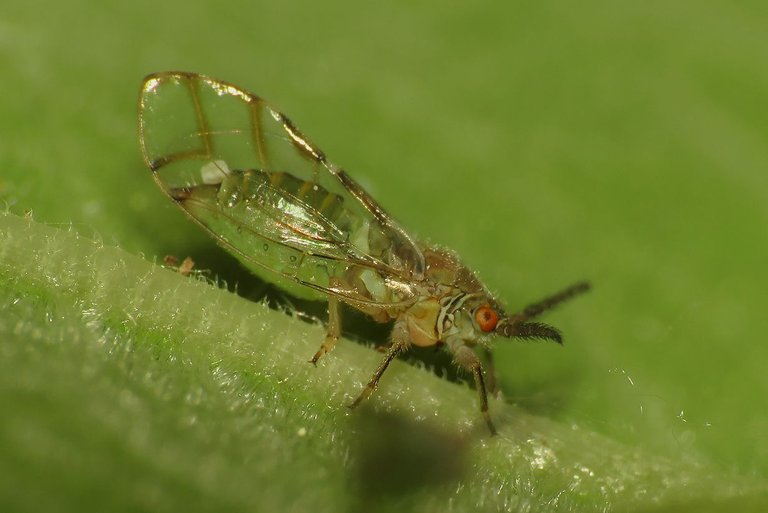
... is part of the large and varied Hemiptera order, a group of insects that, besides a variety of spectacular shapes and colors, has to offer also a spectacular variety of plant sucking pests ...
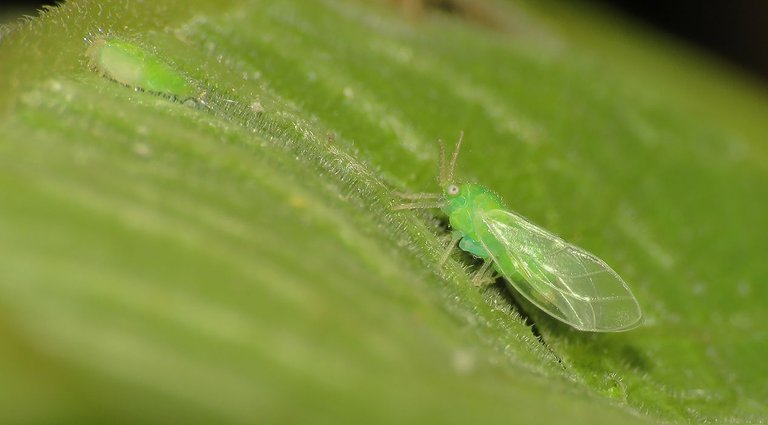
... and this is one of them - the Homotoma ficus ... that feeds and reproduces on the Common fig (Ficus carica) ... on this photograph you can see the nymph in the upper left corner, and the fresh adult that just exited its nymph skin - in the lower right corner.

I began this personal journey through the world and life of this species with the nymphs.
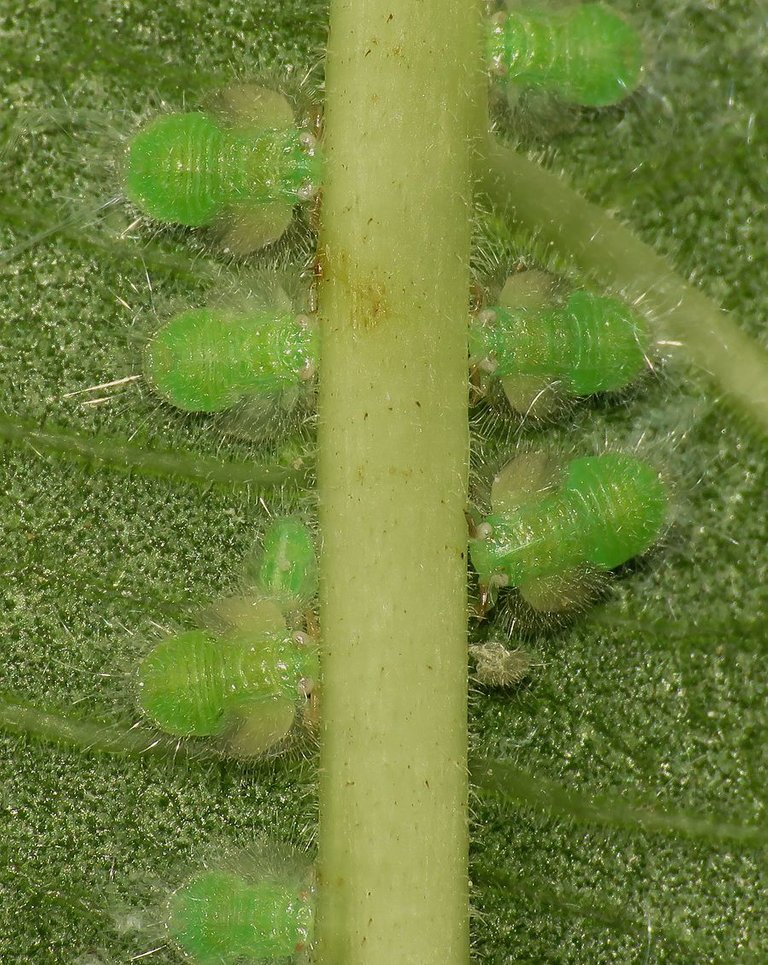
I noticed them first, on that early morning ... three days ago. I thought that this is some mold or fungal growth on the leaves ... but when I prepared my macro equipment and took a good look through the lens ...
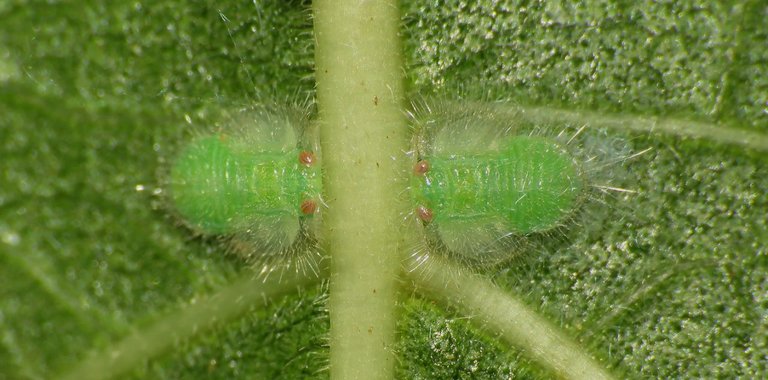
... I was very surprised by these strange little creatures I never saw before.

Seen up close, through a magnifying lens, It looked like a small scale alien invasion. On this photograph, you can see a bunch of nymphs in a typical layout, arranged along the largest veins of the leaf ... the empty skin isolated in the left part of the picture ... and another isolated nymph in the right sector of the image. In the occasion when this photograph was taken, I had the opportunity to learn ...

... that when a nymph gets detached from the sap sucking group ...
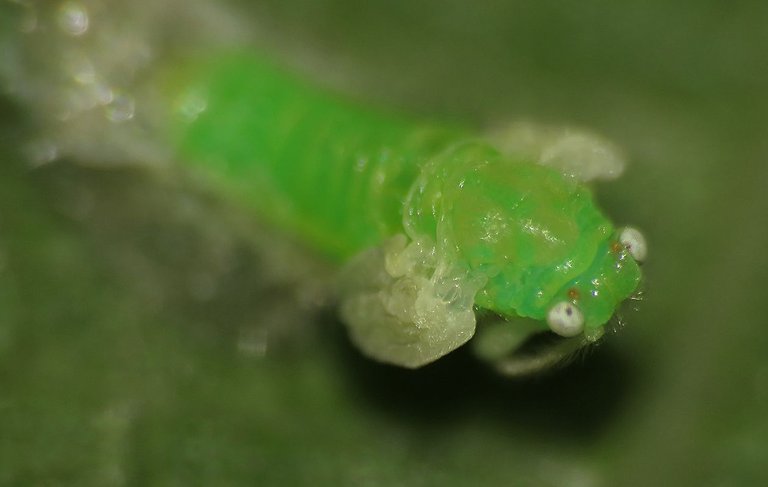
... is time for the metamorphosis.
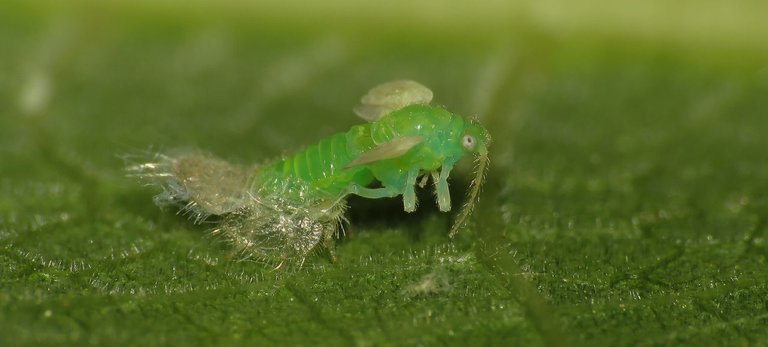
I have no words to describe how much I like to observe and photograph moments like this ...
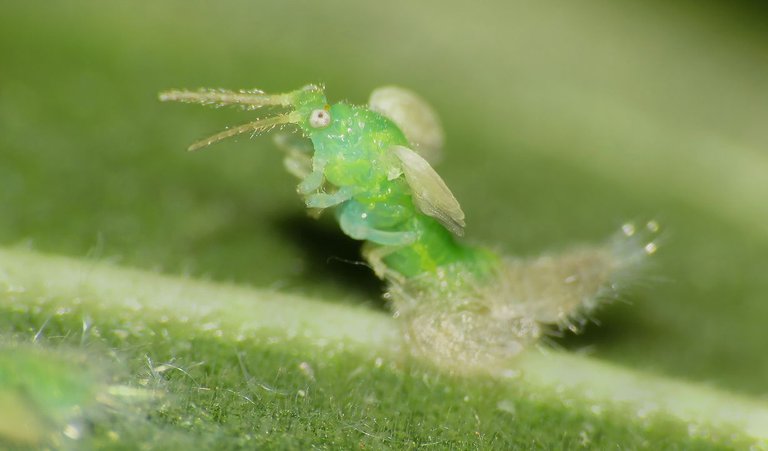
... when a minuscule biological spectacle ...
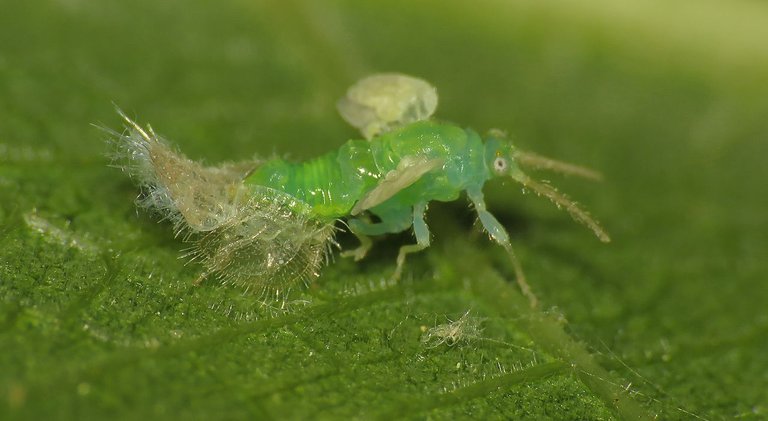
... gets revealed before my eyes.

After a few minutes the fresh new adult was out of the old skin ...
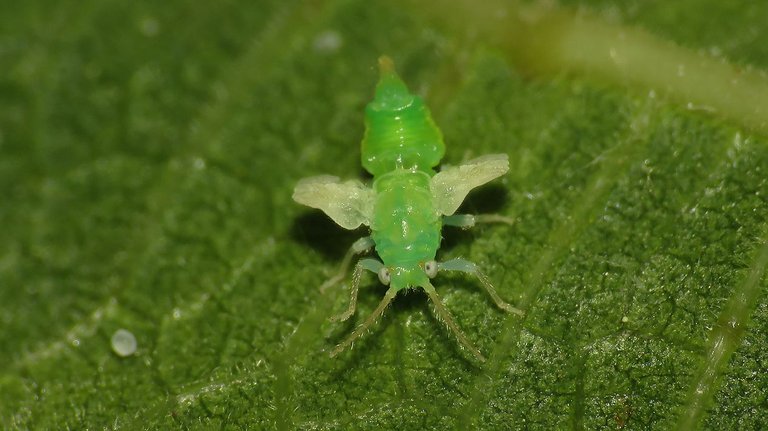
... but this final stage of the Homotoma ficus development still wasn't over ... the insect had wings ... but hey were still folded and useless ...
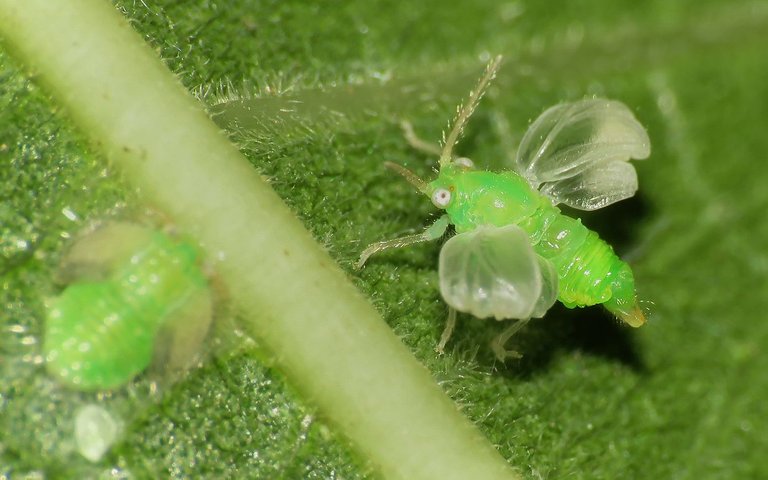
... so I remained concentrated on the scene for another couple of minutes ...
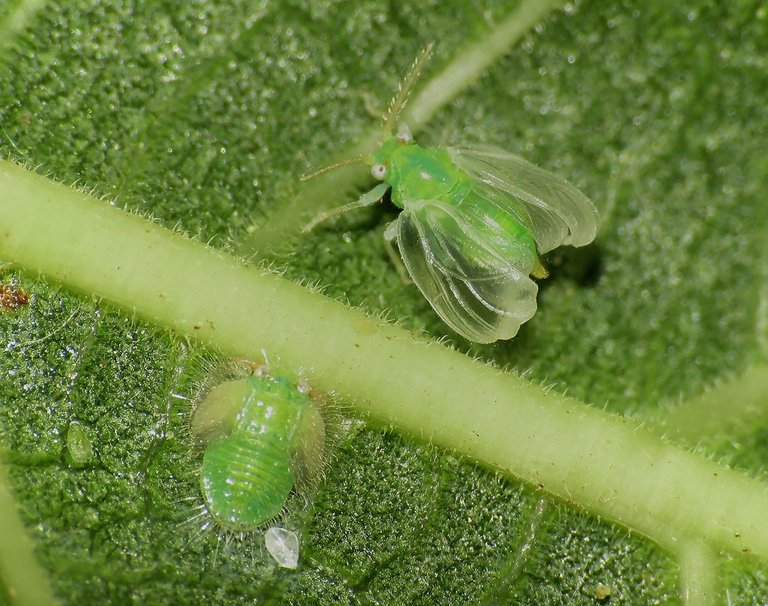
... watching those elegant wings ...
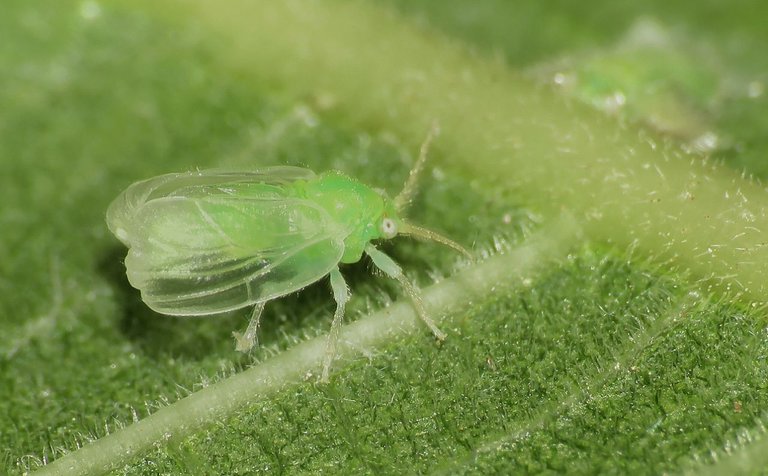
... unfolding and spreading ...
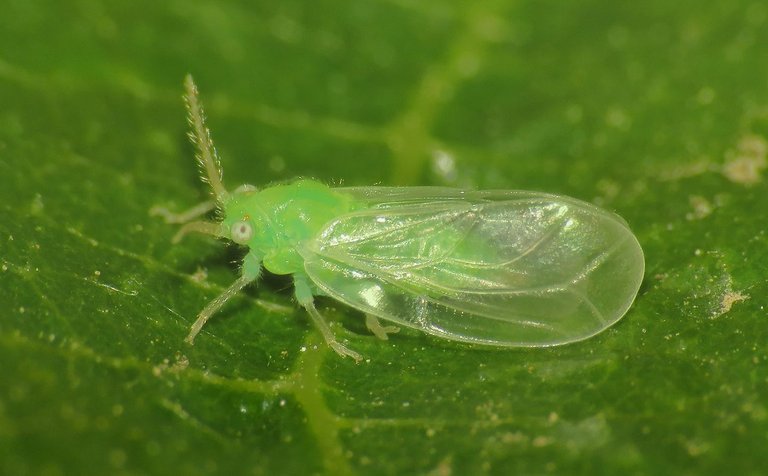
... getting their definitive form. On this photograph you can see a young adult completely formed ... as far the shape is concerned ... in the next few hours the colors will change too ... and you will look at an animal from the post's opening picture.
And now, after this lengthy metamorphosis, I decided to take a little break from the Homotoma ficus story ...

... and show you something else from this fig leaf universe.

These ants are extremely small ... they look like some sort of fleas if you look at them without some kind of magnifying lens ... and after a long meandering search through Internet, I feel pretty confident to say ...
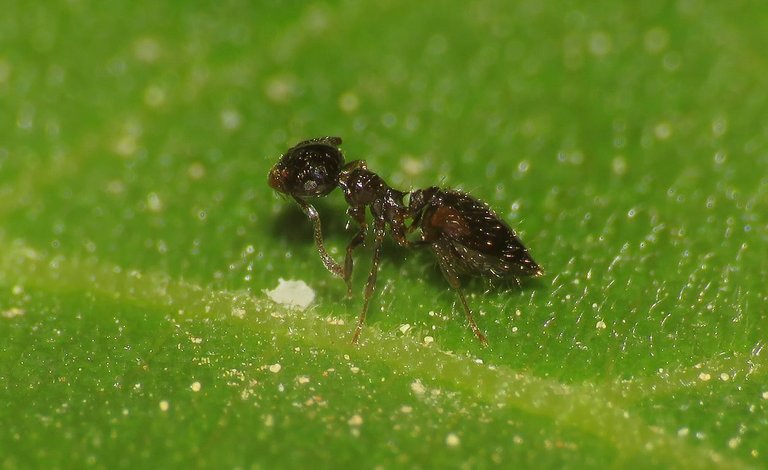
... that these are the Crematogaster auberti ants. A species present in North Africa, South Europe (my part of the world) and Saudi Arabia to Iraq. Although I'm pretty sure about the species, this doesn't mean that I'm 100 % sure ... so if you know better, please tell me.
I encounter these ants almost always inside various flowers.
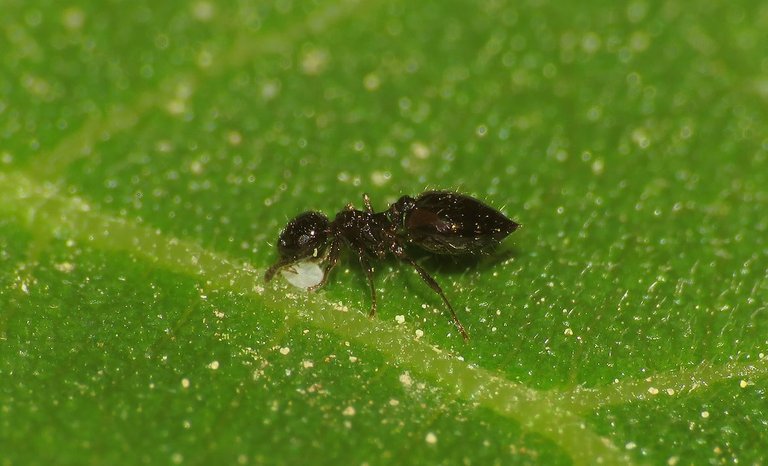
Here on the fig tree I observed them feeding on the small white particles that are scattered all around the leaf's upper surface.
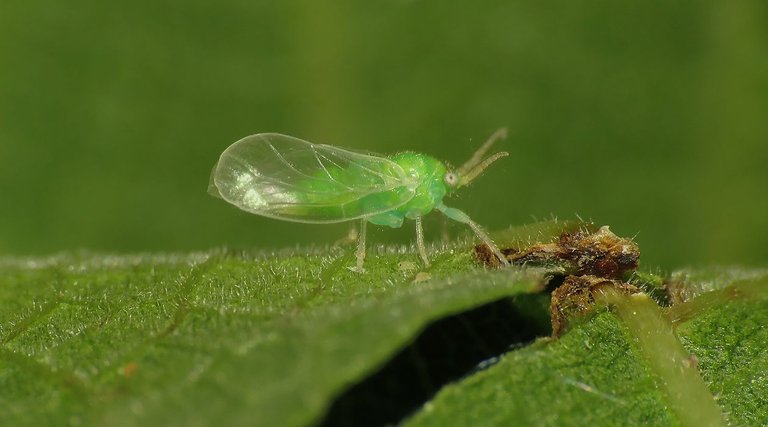
After this short ant - intermezzo ... is time to resume the main story line ... concerning the Hemipteran species from the title.
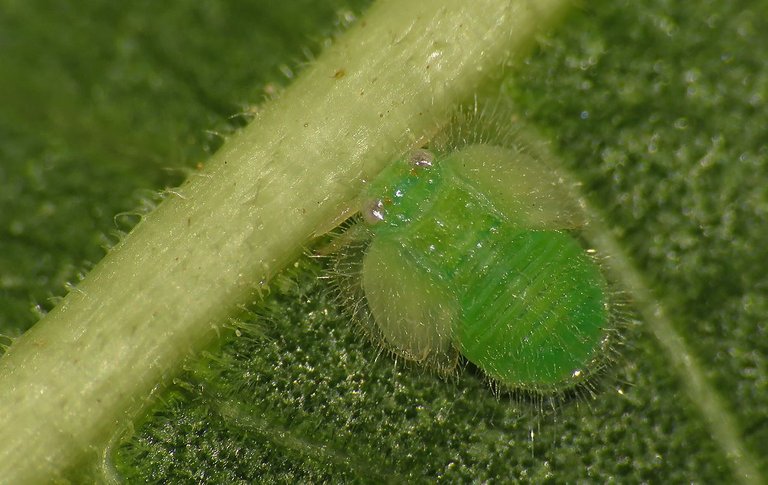
It's a quiet day in the colony ... the nymphs are constantly feeding, attached to the veins and the flow of the plant fluids ...
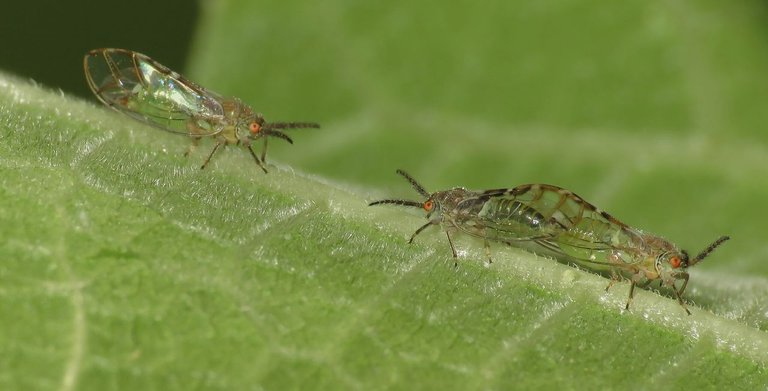
... some adults are mating ...
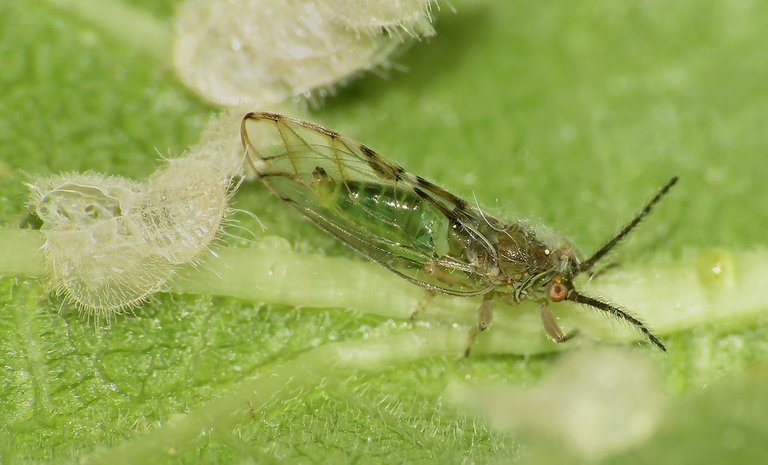
... and some others are just wandering among the empty skins left after the metamorphosis.
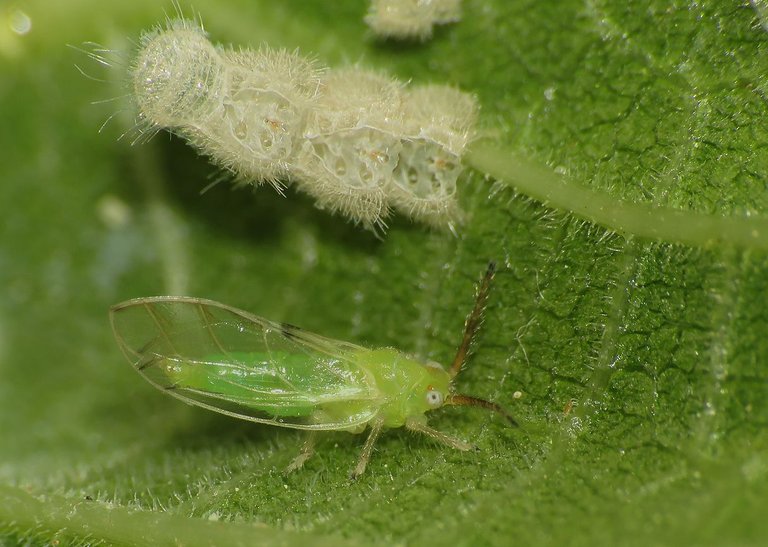
On this photograph, a brand-new adult is resting near a pile of skins. It looks like the nymph after nymph climbed on the empty skin to complete their metamorphosis there. I didn't actually witness that in this case, but looks like a pretty logical explanation ... and I saw this kind of behavior in other species.
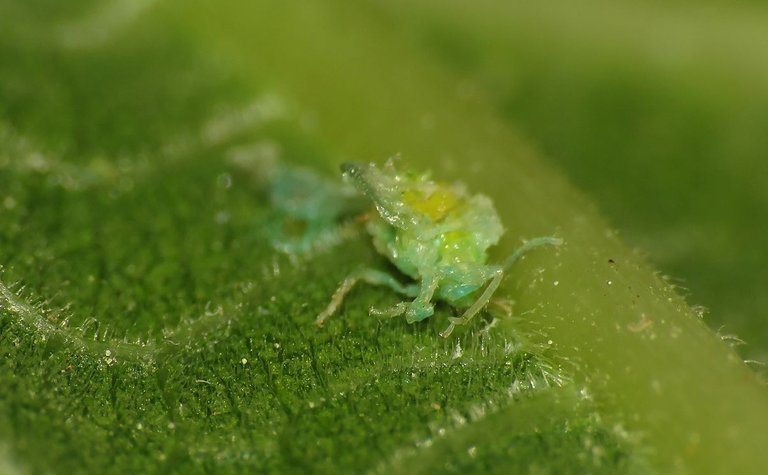
Here is something pretty ugly that looks like a transformation gone wrong.
Near the colony of these insects ...
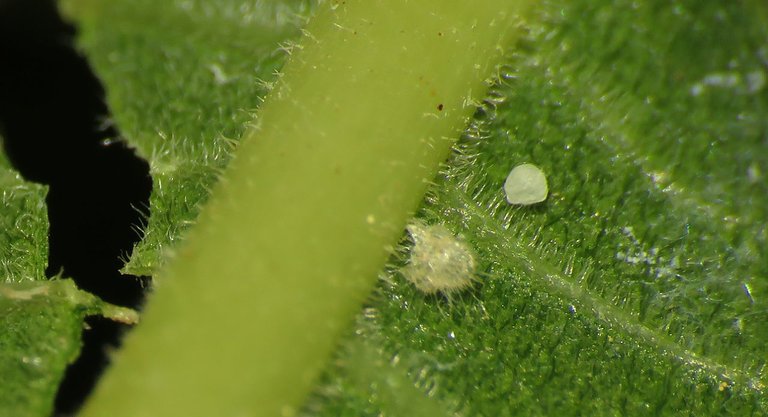
... I found an abundance of these semi - translucent formations ...
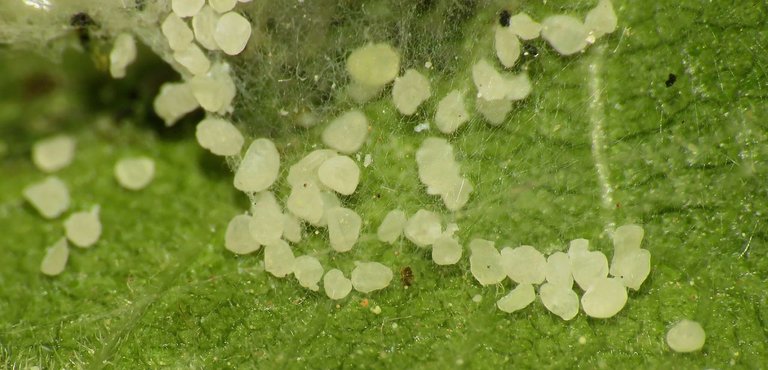
... some of them were caught in some kind of partially destroyed silky shelter ... I don't know what to tell you about this stuff ... but it sure looks cool.
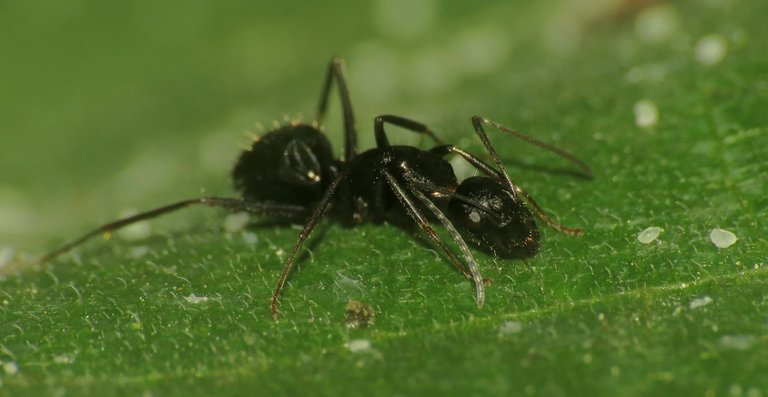
On this photograph you can see a relatively large Formica fusca ant ( I mean, I think that's the right species ... but I'm never too sure when it comes to ants) resting among those little pearls. And this species presence in this post isn't accidental ... they will have an important role in the following, action oriented chapter of this story.
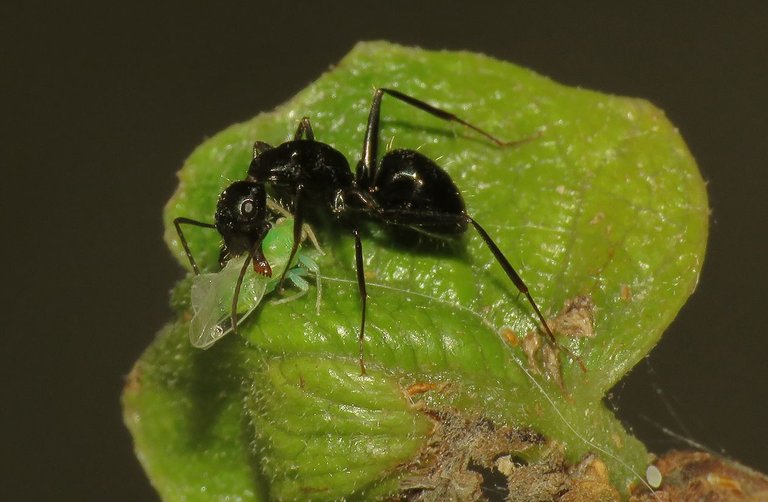
Sometimes, when the newly formed adult Homotoma ficus rest after the transformation, still unable to fly away ... these ants attack them on the leaves ...
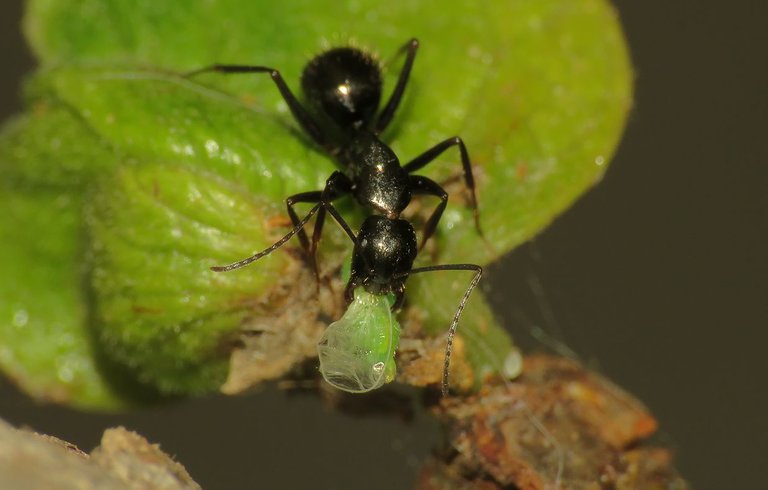
... grab them ...
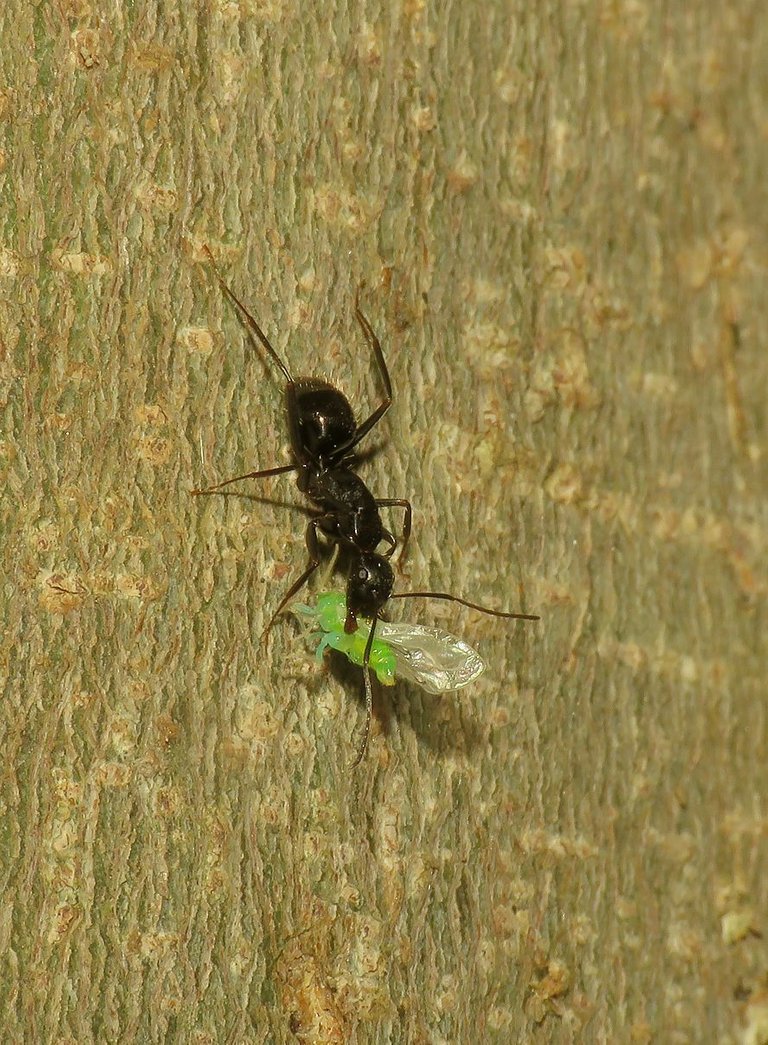
... and start running along the tree trunk, headed down to the ground.
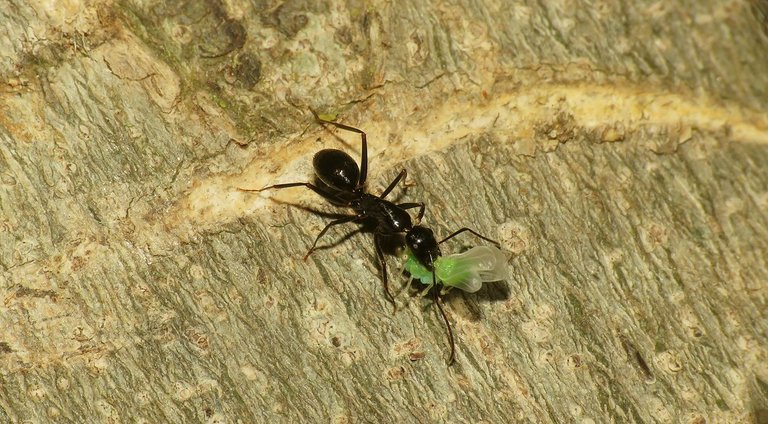
On this photograph you can see the ant running across a scratch in the bark made by one of my cats.
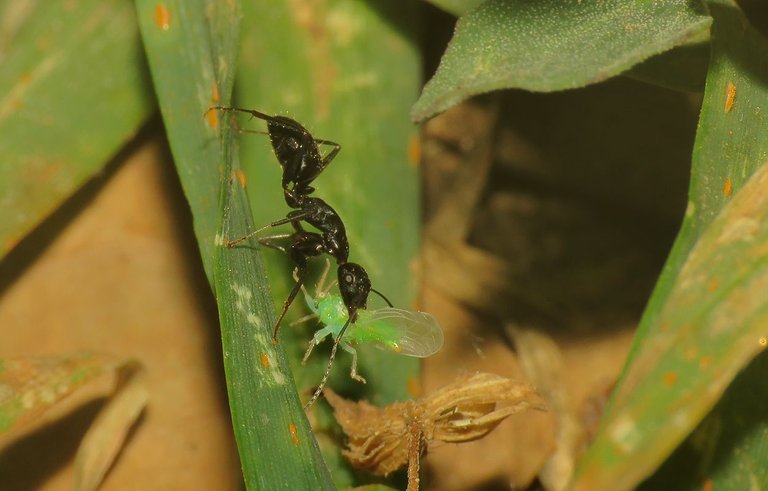
When they reach the ground ...
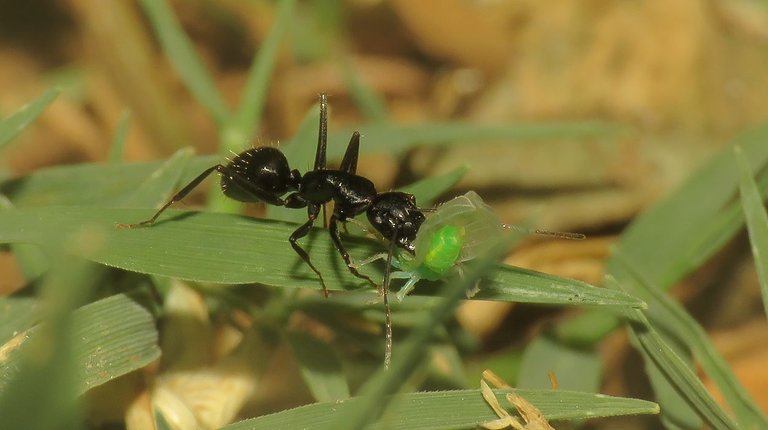
... they continue an epic journey ...
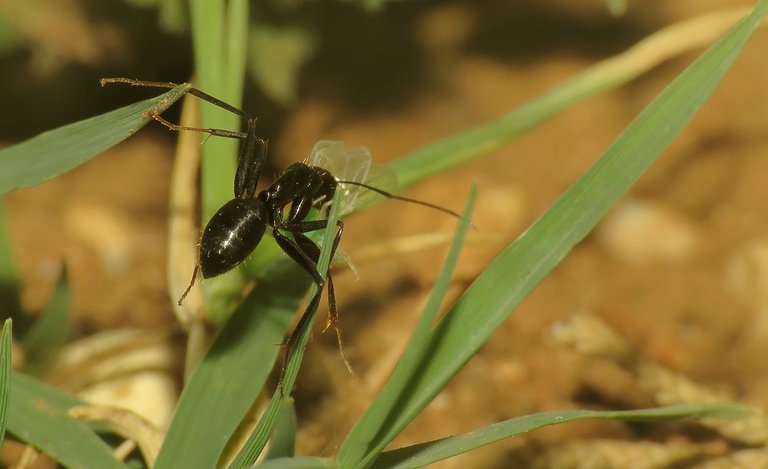
... through the grass - jungle of my lawn.
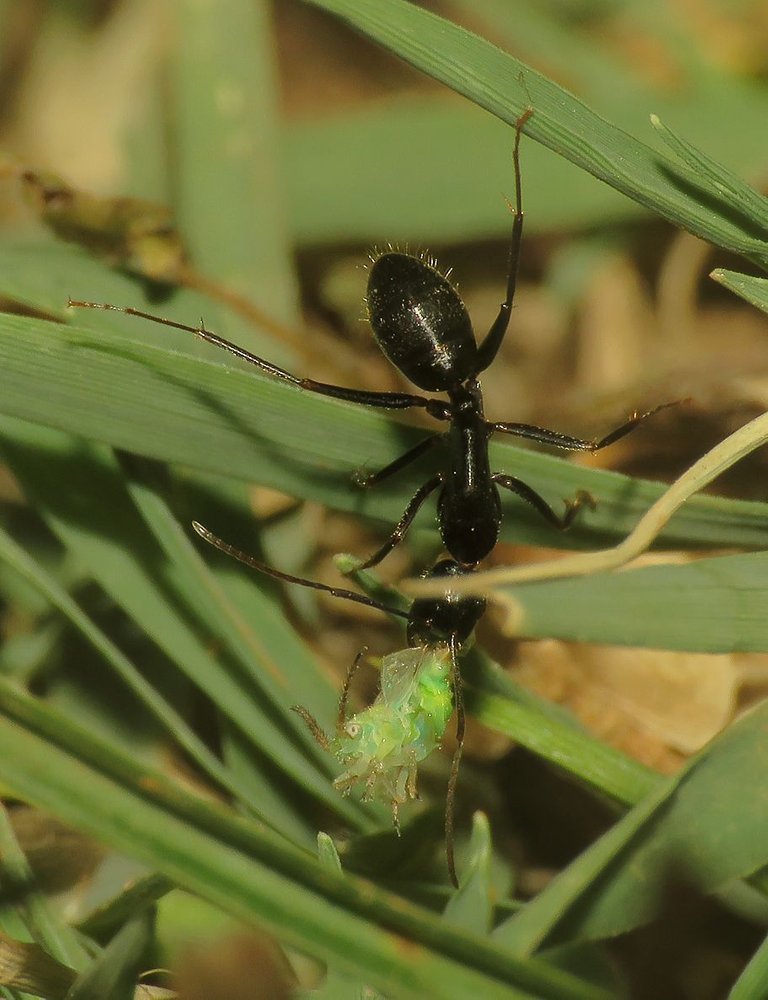
I saw many pretty acrobatic situations ...
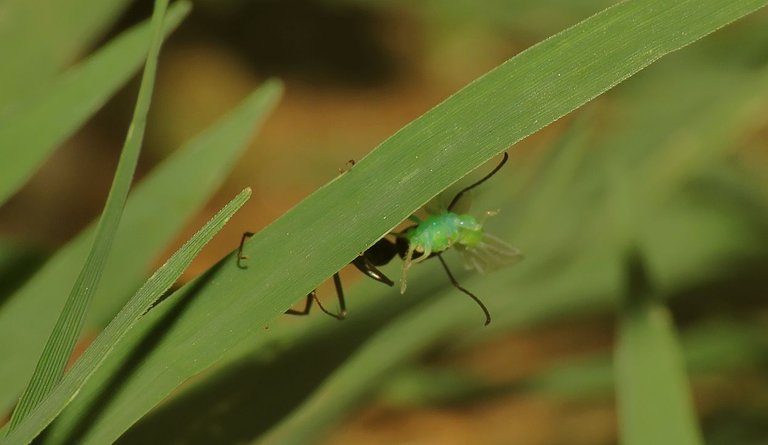
... while following this ant with my camera.

It was a tense, extremely exciting chase ...
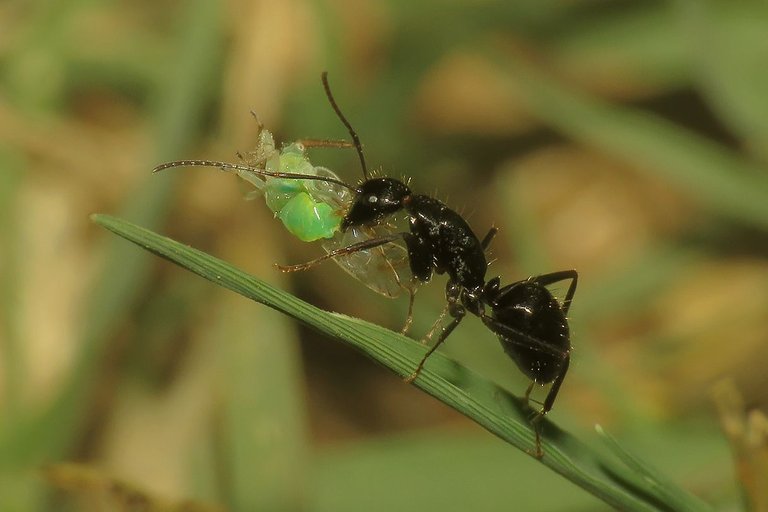
... and a bit frustrating too ... having things always in focus wasn't easy.
At one point the ant disappeared in the dense grass and I couldn't find him.
When I removed the grass around the supposed vanishing point ...
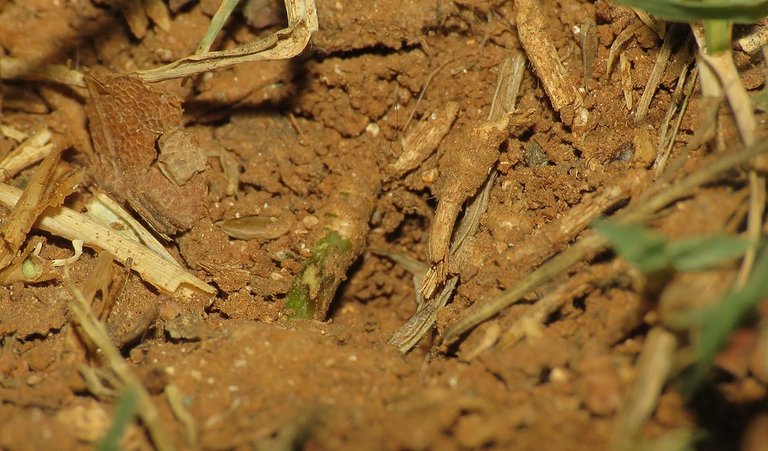
... I found this. Well ... is pretty unclear on this photograph, but this is one of the small auxiliary entrances to the ant colony ... maybe you can see it better on the following photograph.
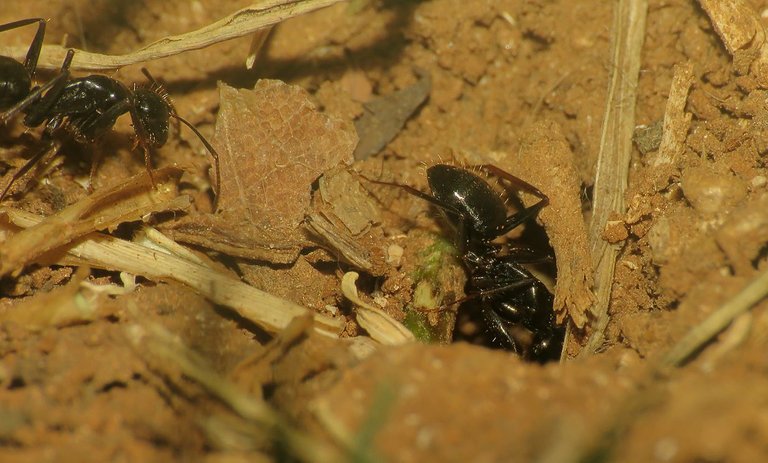
Here you can see an ant entering the hole in the ground.
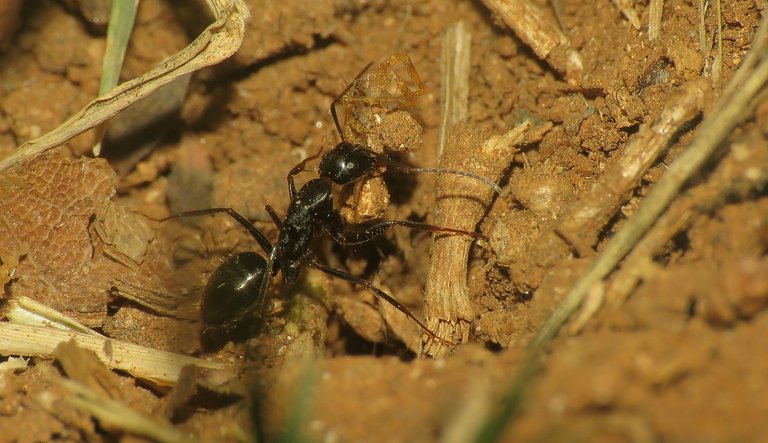
This ant brought some dried out insect thing to the hole ... and then ... after a bit of waiting ...

... I saw another ant approaching the entrance to the underground.
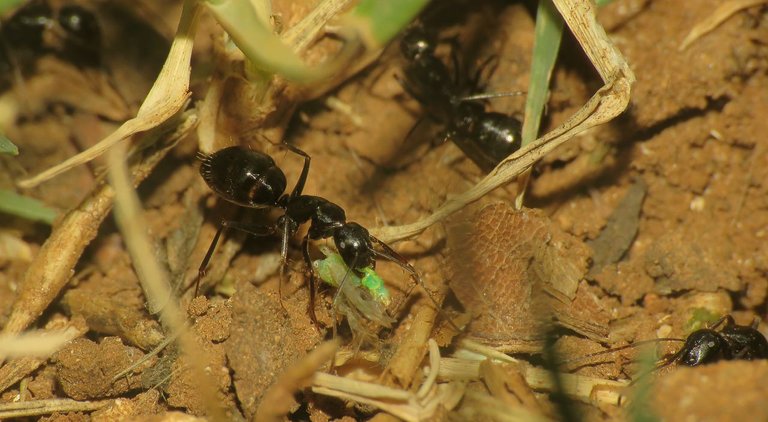
This one was holding the green Homotoma ficus. Now I knew for sure where the ants bring them. It's great to witness this kind of story from start to the end. Is easy to lose the track in these situations and never get the complete picture. So I'm still under the impression of this successful adventure in the insect world.
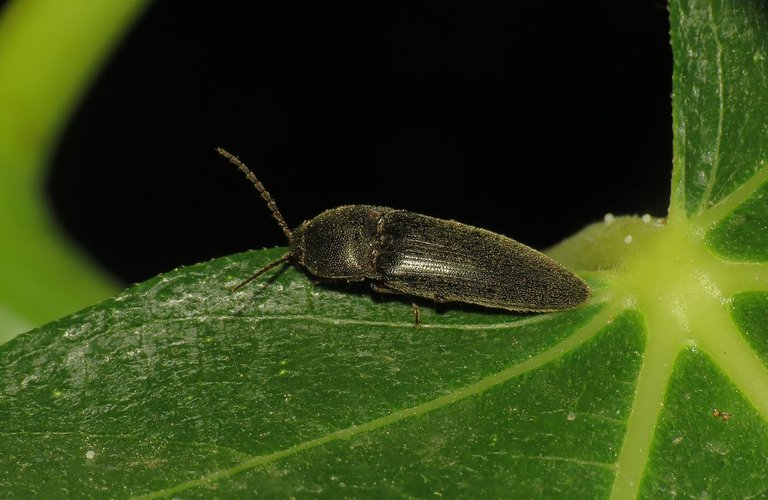
When I returned to explore the leaves, I found this click - beetle (I don't know the exact species) ...
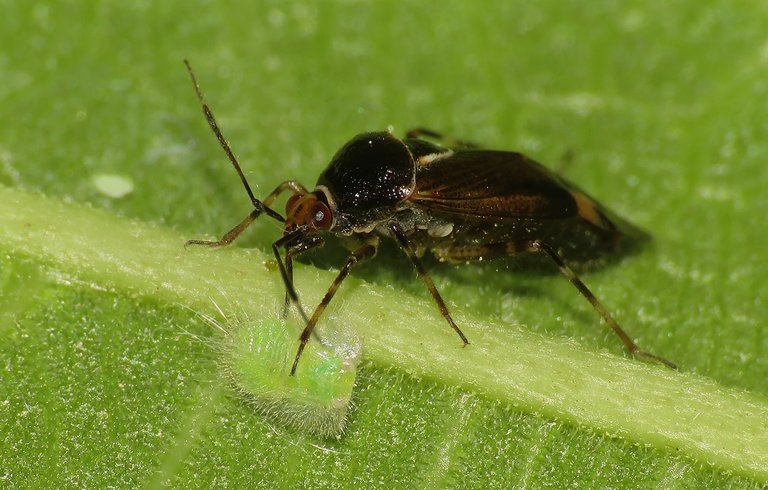
... and discovered another predator. This bug, Deraeocoris flavilinea ... is attacking the Homotoma ficus nymphs.
And now ... as we rapidly approach the end ... there is one very important thing left to say. Although the Homotoma ficus is technically a pest, I learned from the Internet while preparing this post ... and also from my experience with the fig trees in the garden ... that this little invasion leaves practically no damage to the tree ... just some slight deformation of the leaves, but the fruit production goes well with or without this insect species. If you didn't already notice on the photographs, all the stuff regarding the nymphs and the metamorphosis is happening on the lower surface of the leaves.
With this story ends - THE END.
THE FOLLOWING PART OF THE POST DOESN'T MAKE MUCH SENSE, SINCE I DIDN'T UPLOAD THE THING THROUGH THE STEMsocial INTERFACE, BUT NOW I'M TOO EXHAUSTED TO CHANGE IT. I have written the post in STEMsocial, uploaded the photographs there, set the STEMsocial as 10 % beneficiary ... but when I clicked on confirm transaction in Keychain, I waited and waited but that little circle in the keychain kept its rotation, and after some time ... a pretty long time in my opinion ... I gave up, and published the thing here.
And now ... after the end ... I have a few more photograph to show you. I didn't include them in the story part of the post, because they are meant to be enlargeable, and when I put an enlargeable picture in the post through the STEMsocial interface, they are not visible in the preview ... or more precisely they are visible just as a code link ... and that will look like the distraction and break the immersion ... so I decided to put them here, separated from the main post.
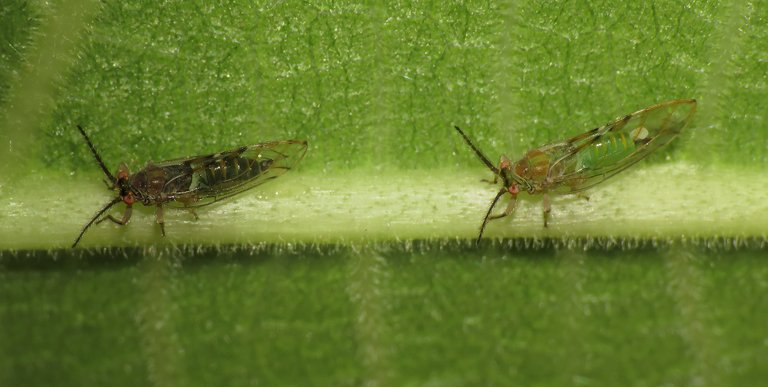 (Enlaergeable)
(Enlaergeable)
Two adults on the leaf.
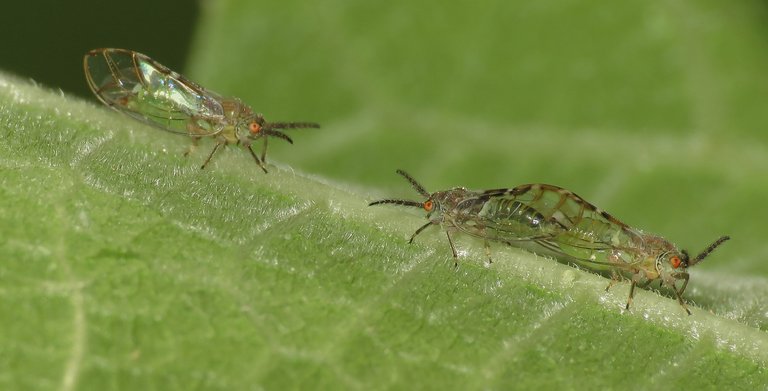 (Enlaergeable)
(Enlaergeable)
Adults mating.
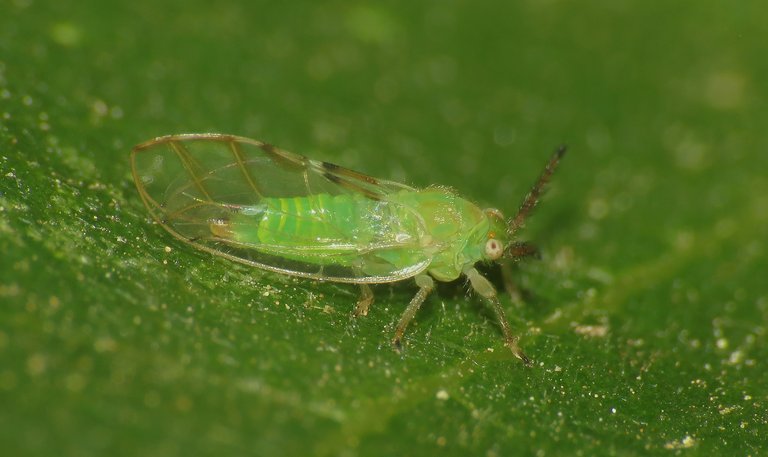 (Enlaergeable)
(Enlaergeable)
A new, still green adult.
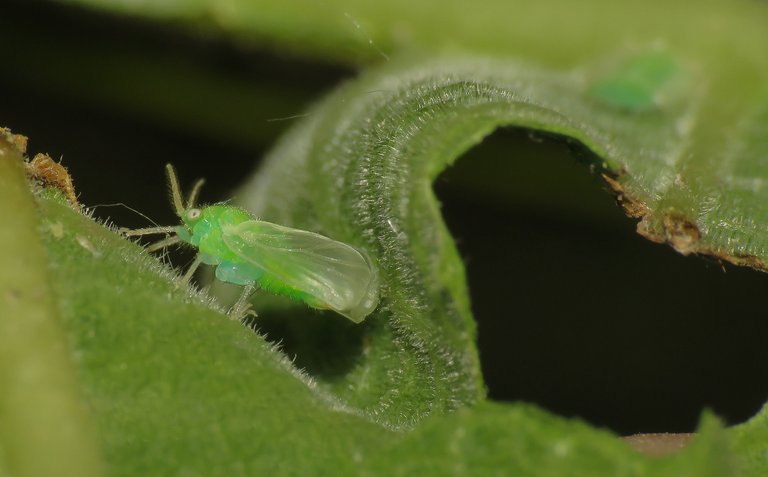 (Enlaergeable)
(Enlaergeable)
Another new, still green adult ... in a shot with a bit diferent atmosphere.
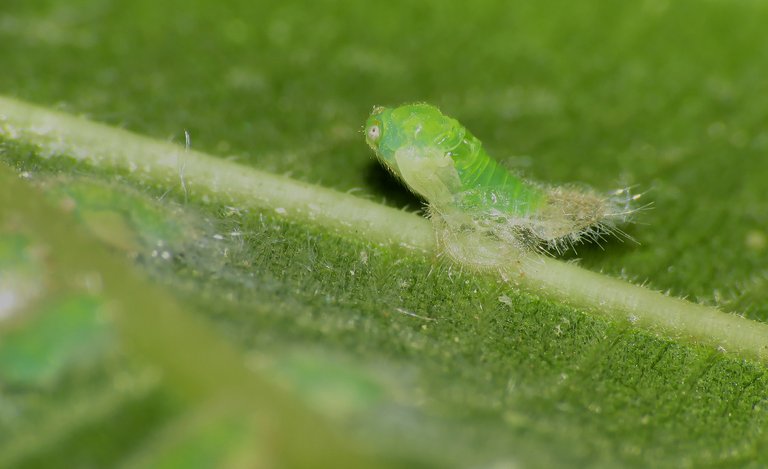 (Enlaergeable)
(Enlaergeable)
A metamorphosis shot.
 (Enlaergeable)
(Enlaergeable)
Another metamorphosis shot.
 (Enlaergeable)
(Enlaergeable)
Large fly feeding on the leaf.
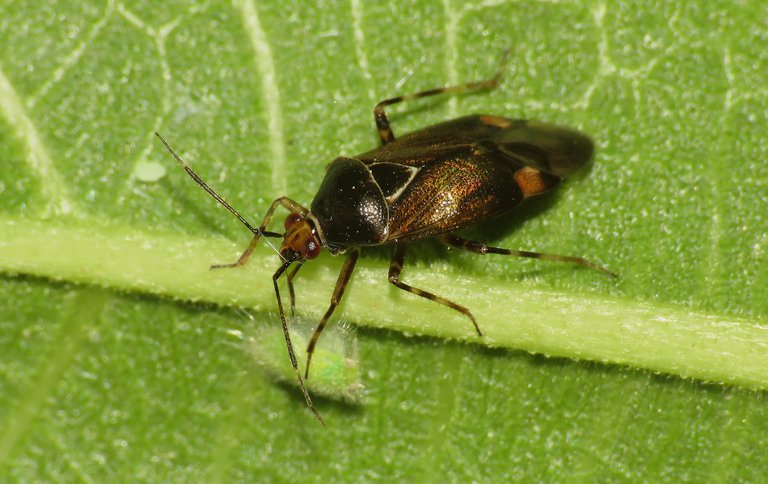 (Enlaergeable)
(Enlaergeable)
Deraeocoris flavilinea bug, feeding on the Homotoma ficus nymph.
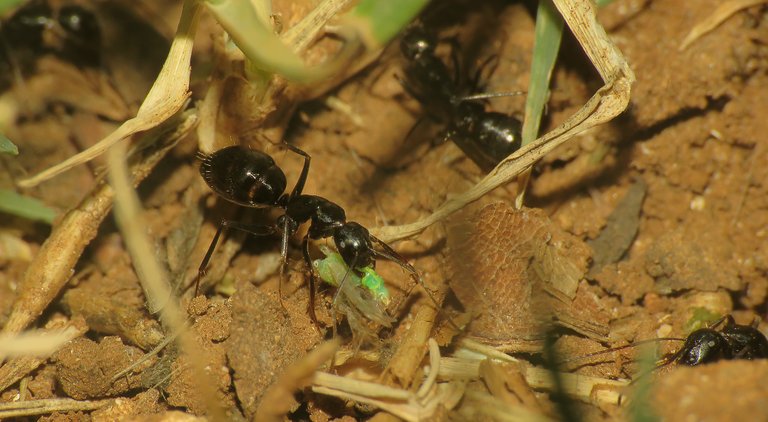 (Enlaergeable)
(Enlaergeable)
Ant with its prey, near the entrance to the underground colony.
AS ALWAYS IN THESE POSTS ON HIVE, ALL THE PHOTOGRAPHS ARE MY WORK.
Oh! The natural cycle of natural insect life! You have so much patience and attention! I think you are the king of the insect realm!! With very different perspective to reality!
:D Thanks, this is a great compliment.
Oh! I only state what I see in reality!! Hahaha.
:D
This post was chosen to be voted by THEUNION.

Thank you
Thanks for your contribution to the STEMsocial community. Feel free to join us on discord to get to know the rest of us!
Please consider supporting our funding proposal, approving our witness (@stem.witness) or delegating to the @stemsocial account (for some ROI).
Please consider using the STEMsocial app app and including @stemsocial as a beneficiary to get a stronger support.
Thank you